Visual Prosthetics Bioengineering
Dr. Nigel Lovell, Professor of Biomedical Engineering, University of New South Wales, discusses his work in the design of visual prosthetics devices, the challenges of the field, and the outlook for commercialization of these devices.
IEEEtv: Please describe your field of research.
Dr. Lovell In the past twenty years at biomedical engineering at the University of New South Wales, we’ve been designing technologies for managing disease and wellness. So, appropriate technologies to allow people to age in place, as well as that, we’ve been designing bionics; implantable bionics to help relieve people who have sensory loss. Specifically, we’ve been designing devices for visual impairment, so, people with profound visual loss; we’ve been making a retinal prosthesis, which is a device that is placed inside the eye to help restore a sense of vision in these patients.
IEEEtv: What are the key challenges in the field of visual prosthetics?
Dr. Lovell In the visual prosthesis field, the biggest challenge is that of the interface. There are numerous interfaces when you place a piece of technology inside the body. There’s the device interface, you have to power the device, you have to communicate with the device. There’s a materials interface. You have to put this device in the body safely, and that means you have to look at the biocompatibility of the actual materials you put into the body. Most importantly, there’s the neural interface, so, that’s how you connect the neurons in the eye, the retinal cells, with the electrodes you need to pass current through to actually stimulate those neurons. So, if you look through history at similar sensory prosthesis, for instance, the cochlear device; thirty years ago they started out with a device that had about twenty electrodes that was placed inside the cochlea to restore some sense of hearing to people with profound hearing loss. Thirty years on, they still have a device with twenty-or-so electrodes because it’s very, very difficult to create the technologies to place safely inside the body to increase the electrode count; even though we are fairly sure that if you increased the electrode count you would have a much better sensation of hearing. It’s a similar thing with visual prosthesis. We can make a device, with our current technology, with about one hundred electrodes. And we need disruptive technologies, new technologies, to scale that up to thousands of electrons. There are a few experimental devices that groups around the world have used and produced, but the reality is that those devices will not last the lifetime of a patient. So, they’ll work for a little while, but they won’t work for five years, or ten years. So there is one of the big challenges.
IEEEtv: What is the time frame for commercialization of new developments in your field?
Dr. Lovell The time frame for commercialization is very long in the medical device industry. It depends, very much, on the mind-set of the groups doing the research. Our philosophy, in biomedical engineering at the University of New South Wales, has always been to use materials and approaches that have a proven history of implant inside the body. That means we don’t have to create a whole lot of new evidence to show the safety and efficacy of those materials and certain devices, because we’re very focused on making sure that every one of our technologies make it into humans within the next five to ten years.







 Nitish V. Thakor (F'1994) is a Professor of Biomedical Engineering at Johns Hopkins University, Provost Chair Professor at National University of Singapore, and also the Director of the Singapore Institute for Neurotechnology (SINAPSE) at the National University of Singapore. His expertise is in the field of Neurotechnology and Medical Instrumentation.
Nitish V. Thakor (F'1994) is a Professor of Biomedical Engineering at Johns Hopkins University, Provost Chair Professor at National University of Singapore, and also the Director of the Singapore Institute for Neurotechnology (SINAPSE) at the National University of Singapore. His expertise is in the field of Neurotechnology and Medical Instrumentation. 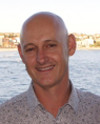 Nigel Lovell is Scientia Professor at the Graduate School of Biomedical Engineering, University of New South Wales (UNSW), Sydney, Australia.
Nigel Lovell is Scientia Professor at the Graduate School of Biomedical Engineering, University of New South Wales (UNSW), Sydney, Australia. 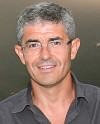 José del R. Millán the Defitech Professor at the Ecole Polytechnique Fédérale de Lausanne (EPFL) where he explores the use of brain signals for multimodal interaction and, in particular, the development of non-invasive brain-controlled robots and neuroprostheses. In this multidisciplinary research effort, Dr. Millán is bringing together his pioneering work on the two fields of brain-machine interfaces and adaptive intelligent robotics. He received his Ph.D. in computer science from the Univ. Politècnica de Catalunya (Barcelona, Spain) in 1992.
José del R. Millán the Defitech Professor at the Ecole Polytechnique Fédérale de Lausanne (EPFL) where he explores the use of brain signals for multimodal interaction and, in particular, the development of non-invasive brain-controlled robots and neuroprostheses. In this multidisciplinary research effort, Dr. Millán is bringing together his pioneering work on the two fields of brain-machine interfaces and adaptive intelligent robotics. He received his Ph.D. in computer science from the Univ. Politècnica de Catalunya (Barcelona, Spain) in 1992. 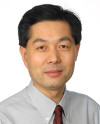 Dr Cuntai Guan received his Ph.D. degree in Electrical and Electronic Engineering from Southeast University in 1993. He is currently Principal Scientist and Department Head at the Institute for Infocomm Research, Agency for Science, Technology and Research (A*STAR), Singapore. His current research interests include neural and biomedical signal processing; neural and cognitive process and its clinical application; brain-computer interface algorithms, systems and its applications.
Dr Cuntai Guan received his Ph.D. degree in Electrical and Electronic Engineering from Southeast University in 1993. He is currently Principal Scientist and Department Head at the Institute for Infocomm Research, Agency for Science, Technology and Research (A*STAR), Singapore. His current research interests include neural and biomedical signal processing; neural and cognitive process and its clinical application; brain-computer interface algorithms, systems and its applications.  Dr Kai Keng Ang received his Ph.D. degree in computer engineering from Nanyang Technological University, Singapore. He is currently the Head of Brain-Computer Interface Laboratory and a Scientist with the Institute for Infocomm Research, Agency for Science, Technology and Research, Singapore. His current research interests include brain-computer interfaces, computational intelligence, machine learning, pattern recognition, and signal processing.
Dr Kai Keng Ang received his Ph.D. degree in computer engineering from Nanyang Technological University, Singapore. He is currently the Head of Brain-Computer Interface Laboratory and a Scientist with the Institute for Infocomm Research, Agency for Science, Technology and Research, Singapore. His current research interests include brain-computer interfaces, computational intelligence, machine learning, pattern recognition, and signal processing. 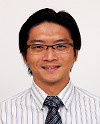 Mr. Christopher Kuah is a Principal Occupational Therapist currently holding the post of Allied Health Coordinator at the Centre for Advanced Rehabilitation Therapeutics at Tan Tock Seng Hospital. He received his professional qualification in 1995 and attained the Master of Science in Neurorehabilitation from Brunel University (UK) in 2002. His key neurorehabilitation interests include management of clients with hemiplegia and those with complex neuro-disability as a result of stroke and acquired brain injuries. The current focus of his clinical and research work involves development of clinical programs incorporating rehabilitation technologies encompassing robotics, brain-computer interface, and sensor technologies for post-stroke upper limb recovery.
Mr. Christopher Kuah is a Principal Occupational Therapist currently holding the post of Allied Health Coordinator at the Centre for Advanced Rehabilitation Therapeutics at Tan Tock Seng Hospital. He received his professional qualification in 1995 and attained the Master of Science in Neurorehabilitation from Brunel University (UK) in 2002. His key neurorehabilitation interests include management of clients with hemiplegia and those with complex neuro-disability as a result of stroke and acquired brain injuries. The current focus of his clinical and research work involves development of clinical programs incorporating rehabilitation technologies encompassing robotics, brain-computer interface, and sensor technologies for post-stroke upper limb recovery.  Dr. Effie Chew is Senior Consultant in Rehabilitation Medicine, Division of Neurology, University Medicine Cluster, National University Hospital (NUH), Singapore. She received her MBBS from the University of Melbourne, Australia and her Membership to the Royal College of Physicians (Edinburgh, UK). She completed her Advanced Specialist Training in Rehabilitation Medicine in Singapore and went on to complete a Fellowship in Clinical Neurorehabilitation at Spaulding Rehabilitation Hospital, Harvard Medical School, where she worked in the areas of noninvasive brain stimulation for neuromodulation and neurorecovery, as well as neuropharmacology for cognitive recovery in traumatic brain injury and robotics and motor learning in recovery post-stroke. These continue to be her current areas of research interests.
Dr. Effie Chew is Senior Consultant in Rehabilitation Medicine, Division of Neurology, University Medicine Cluster, National University Hospital (NUH), Singapore. She received her MBBS from the University of Melbourne, Australia and her Membership to the Royal College of Physicians (Edinburgh, UK). She completed her Advanced Specialist Training in Rehabilitation Medicine in Singapore and went on to complete a Fellowship in Clinical Neurorehabilitation at Spaulding Rehabilitation Hospital, Harvard Medical School, where she worked in the areas of noninvasive brain stimulation for neuromodulation and neurorecovery, as well as neuropharmacology for cognitive recovery in traumatic brain injury and robotics and motor learning in recovery post-stroke. These continue to be her current areas of research interests. 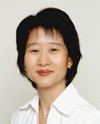 Dr Karen Sui Geok Chua, MBBS (Singapore), FRCP (Edin), FAMS, is currently senior consultant rehabilitation physician practicing at the Tan Tock Seng Hospital Rehabilitation Centre, Singapore. Her special interests include Neurorehabilitation, Spasticity management, including Botulinum toxin therapy, neurolytic blocks and rehabilitation robotics and technology translation.
Dr Karen Sui Geok Chua, MBBS (Singapore), FRCP (Edin), FAMS, is currently senior consultant rehabilitation physician practicing at the Tan Tock Seng Hospital Rehabilitation Centre, Singapore. Her special interests include Neurorehabilitation, Spasticity management, including Botulinum toxin therapy, neurolytic blocks and rehabilitation robotics and technology translation.